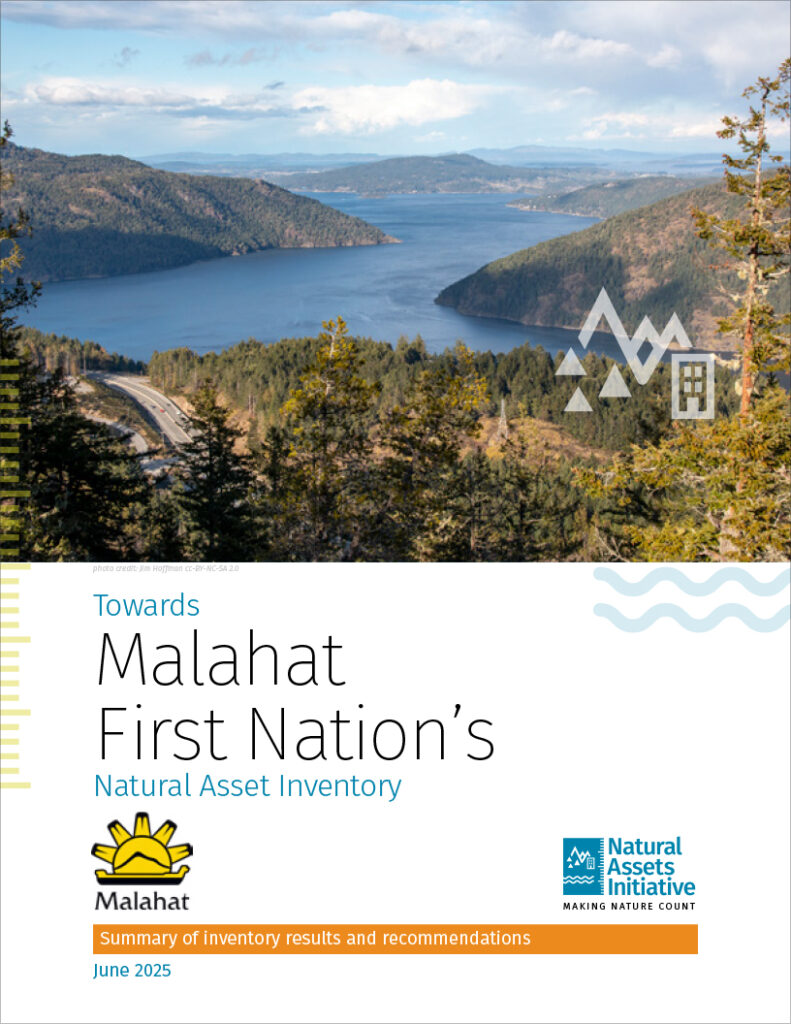Malahat First Nation is a Coast Salish Indigenous community and one of five W̱SÁNEĆ (Saanich) Nations. Malahat Nation is located between Victoria and Mill Bay, British Columbia, with two reserve lands located on the western shore of Saanich Inlet.
Holding inherent Aboriginal rights (including title) throughout its territory, one of Malahat Nation’s key focuses is to reclaim pre-colonization governance over traditional lands, with emphasis on stewardship as well as cultural monitoring and protection. To do so, they require knowledge and integrated data on the ecological context they inhabit across its broader traditional territory to understand connection between past, or proposed actions of stakeholders.
Natural asset management can help Malahat Nation understand this larger scale, including unique ecosystems, the connection to ecological services, and actions that the Nation my wish to take to protect them—not simply when there is a referral but on a proactive and ongoing basis.
Towards Malahat First Nation’s Natural Asset Inventory
In addition to developing the inventory and recommendations, Project deliverables included: an initial condition assessment; risk identification; engagement with the Malahat Nation community to improve and refine the inventory, as well as potential training needs for continued maintenance of the inventory.
The partnership is guided by an Etuaptmumk/Two-Eyed Seeing approach, with the specific intention of finding ways to recognize that managing natural assets within an Indigenous context requires a systems approach. The Project builds on learnings from work with Treaty 1 First Nations to explore how to braid Western asset management concepts with Indigenous perspectives, knowledge, and cultural values — in the context of Malahat First Nation — to refine a natural asset management approach that helps the Nation respond effectively to referrals, make land informed land management decisions, and empower stewardship of their traditional territory.
Project Highlights and Lessons Learned
For Malahat First Nation, the biggest takeaway from the Project was learning how to use a Western framework—asset mapping—to build a communications tool to convey Indigenous knowledge and priorities. Incorporating language and community values into the framework brought the tool closer to Malahat’s snuwuyulh, while simultaneously incorporating a method of analyzing the data which can be easily understood by external parties, such as the Province, forestry, or mining companies.
2. Understanding the Two-Eyed Seeing concept as it related to natural asset management
Experience with Two-Eyed Seeing as it relates to NAM is still limited to a handful of projects across Canada, so it is too early to draw substantial conclusions. Nevertheless, the Project allowed NAI to refine the concept slightly to better understand where the overlap between Traditional Ecological Knowledge and Western Science lies.
3. Inventories as a tool for First Nations in referrals process
‘Referrals’ are the process that the Province of British Columbia uses as part of its ‘Duty to Consult’ First Nations when there are proposed developments in a First Nation’s territory. Referrals are looking for permission to develop in a specific area, and they do not normally refer to adjacent developments or address cumulative effects associated with other developments. It is therefore up to the First Nation to understand potential consequences to the land, resources, community traditional use and long-term impacts.
Lack of staff capacity and/or limited data affects a First Nation’s ability to effectively respond to referrals, making it harder for them to make proactive and informed land use decisions. Enhancing the effectiveness of Malahat Nation’s participation in referrals with their working group is a significant driver behind this Project—the resulting inventory can be a tool to “level the playing field” for Malahat Nation and support it in its dealings with those seeking to undertake development on its territory.



